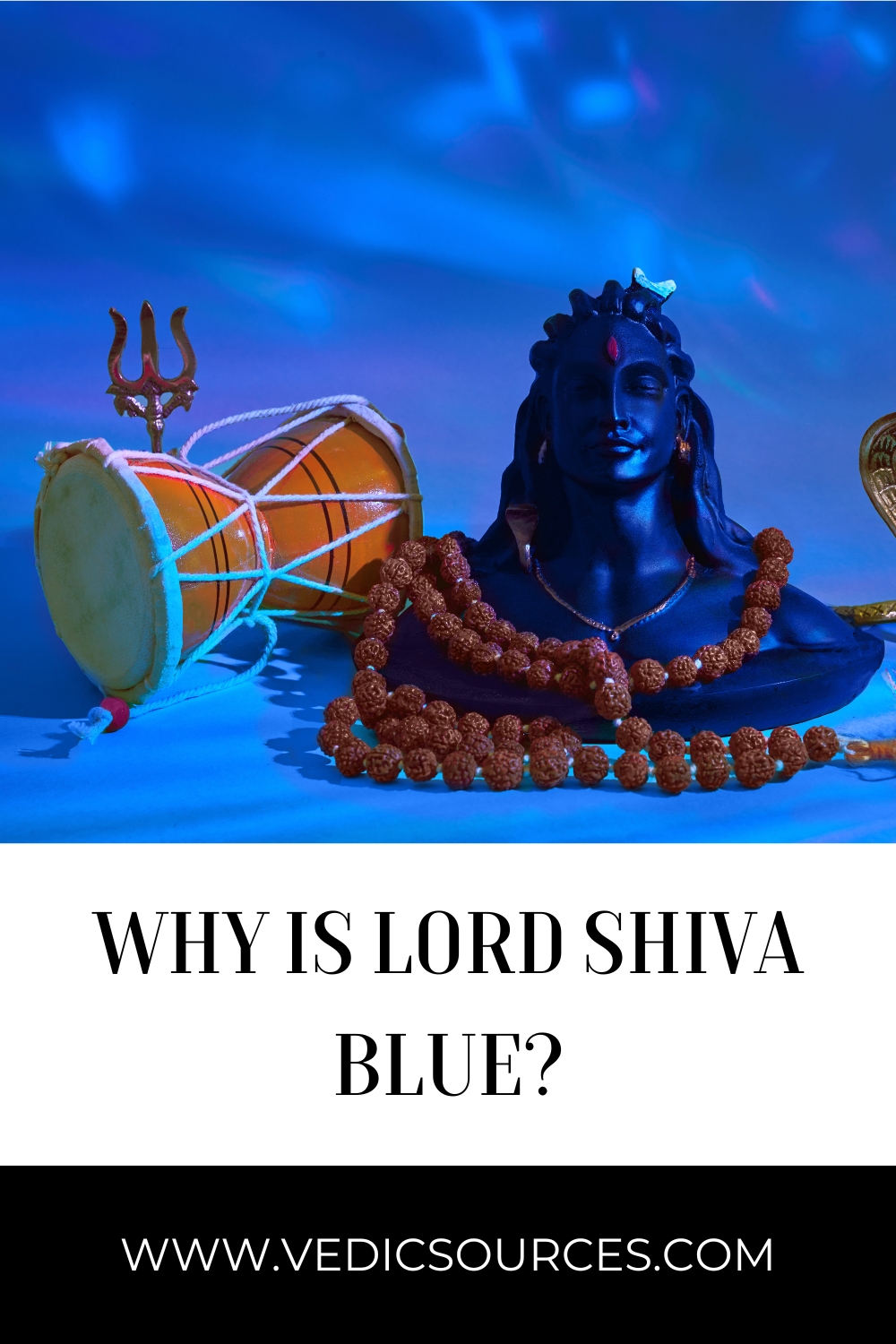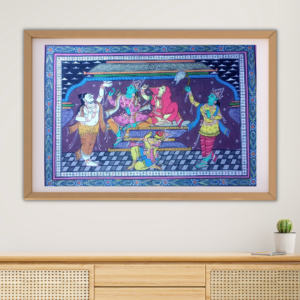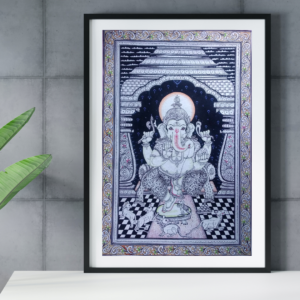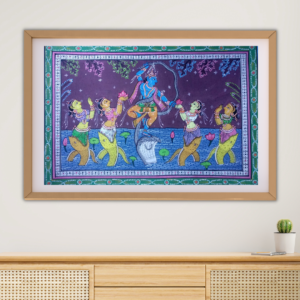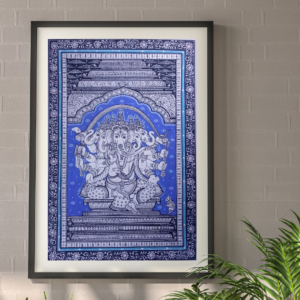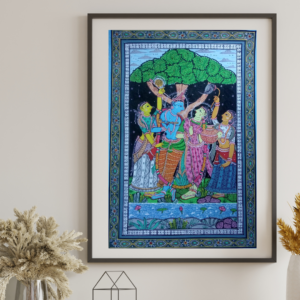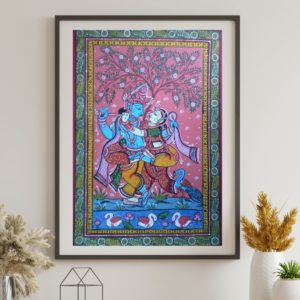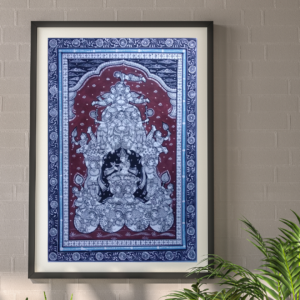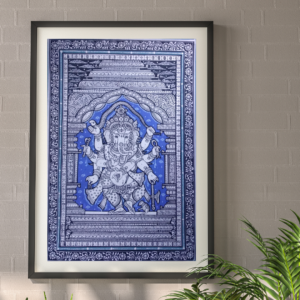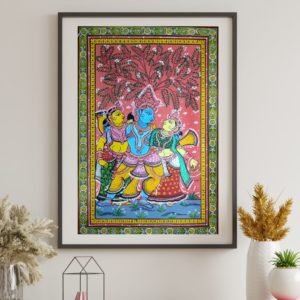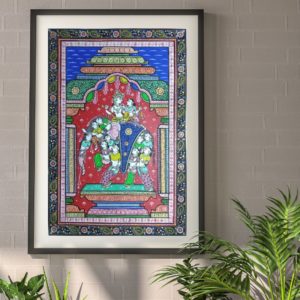In Hinduism, artists often depict Lord Shiva, one of the principal deities, with a unique blue complexion. This striking portrayal has captured the curiosity of devotees and art enthusiasts alike for generations. In this post, we will explore the various reasons and interpretations behind the depiction of Lord Shiva as blue in Hindu iconography and mythology.
The Symbolism of the Blue Color:
The blue color of Lord Shiva holds profound symbolism within Hinduism. Blue is associated with the infinite expanse of the sky and the boundless depths of the ocean. It represents transcendence, eternity, and the infinite cosmos, signifying that Lord Shiva transcends the limitations of the physical world and dwells in the spiritual realm.
Legends from Hindu Mythology:
There are several legends in Hindu mythology that shed light on the reason behind Lord Shiva’s blue complexion. One of the most popular stories revolves around the cosmic poison known as “Halahala” or “Kalkuta Vish,” which emerged during the churning of the ocean (Samudra Manthan) by the Devas (gods) and Asuras (demons) to obtain the nectar of immortality (amrita).
According to the myth, the poison was so potent that it could destroy the entire universe. To protect the cosmos, Lord Shiva selflessly drank the Halahala poison, but he did not swallow it. Instead, he held it in his throat (Kanaka Dhara), which turned blue due to the poison’s potent nature. Thus, Lord Shiva became Neelakantha, the blue-throated deity.
Why Shravan Month is Celebrated for Lord Shiva
The Blue Throat and Devotion:
The blue throat of Lord Shiva also carries a message of divine devotion. By consuming the deadly poison, he demonstrated his self-sacrificing nature and willingness to bear the burdens of the world for the well-being of all creation. This act portrays Lord Shiva as the ultimate symbol of compassion, selflessness, and protection.
Depiction in Art and Iconography:
Artistically, Lord Shiva’s blue complexion has been a prominent feature in various forms of representation. In sculptures, paintings, and temple carvings, artists often depict him with blue skin, adorned with sacred ash (vibhuti), and a crescent moon on his head. The depiction of the blue color is a way to visually convey his divine attributes, making it easier for devotees to identify and connect with him.
Why Nandi is Outside Shiva Temple
Cosmic Connection:
In Hindu philosophy, people regard Lord Shiva as the Supreme Being, the creator, preserver, and destroyer of the universe. His blue color connects him with the vast expanse of the cosmos, reminding us of the omnipresence and all-encompassing nature of the divine. The blue hue signifies that Lord Shiva transcends the physical realm, residing in the celestial dimensions beyond human comprehension.
Representing Timelessness:
The concept of time in Hinduism is cyclical rather than linear. Lord Shiva’s blue complexion represents the timeless nature of existence. He stands outside the constraints of time, symbolizing the eternal cycle of creation, sustenance, and dissolution. Recognizing this aspect of Shiva encourages devotees to embrace change as an inherent part of life’s journey.
Why Shiva Has Moon on His Head
Connection with Water and Serenity:
The color blue often associates with water, signifying it as a life-giving and purifying element. It is said that Lord Shiva’s blue skin symbolizes his deep connection with the rivers Ganga and Yamuna. That flowed from his matted hair. These sacred rivers not only represent physical purity but also signify spiritual cleansing and liberation. Just as water brings calm and tranquility, Shiva’s blue complexion is a reminder of his serene and composed nature, guiding seekers toward inner peace and tranquility.
The Lord of Ascetics:
Lord Shiva is also known as “Ardhanarishvara,” the half-male, half-female form. Representing the harmonious union of opposites. His blue color reflects his identity as the supreme ascetic, detached from worldly desires and emotions. This aspect of Lord Shiva inspires individuals to rise above material attachments and pursue a path of spiritual awakening.
Why Did Lord Shiva Drink Poison?
Conquering the Ego:
The blue throat of Lord Shiva serves as a powerful metaphor for conquering the ego, the root cause of suffering and ignorance. When he swallowed the potent poison during the churning of the ocean, he demonstrated that only by subduing the ego can one achieve spiritual evolution. Shiva’s blue throat, therefore, calls upon devotees to purify their hearts and minds, fostering humility and compassion towards all beings.
A Divine Meditator:
Shiva’s blue color also highlights his role as the supreme meditator (Yogi). Through profound meditation, he delves into the depths of existence, transcending the physical and the metaphysical. As the Adiyogi, the first yogi, Shiva imparts the knowledge of yoga and meditation to seekers, guiding them toward self-realization and enlightenment.
The Eternal Dance of Creation:
Lord Shiva’s “Nataraja” dance, where he dances within a circle of flames, stands as one of the most iconic representations of the deity. The blue color of his skin in this form further emphasizes the cosmic nature of his dance – the Tandava, which symbolizes the eternal dance of creation, preservation, and destruction. Through this dance, Shiva signifies the rhythmic cycles of existence and the continuous flow of energy in the universe.
Why Lord Shiva is Called Mahadev
Conclusion:
The portrayal of Lord Shiva with a blue complexion encompasses profound symbolism, mystical significance, and spiritual wisdom, making it multi-faceted. It reminds us of the limitless nature of the divine, the essence of timelessness, and the need to conquer the ego for spiritual growth. Lord Shiva’s blue color invites us to explore the depths of our consciousness, seeking serenity, and embracing change as an integral part of life’s journey.
By meditating upon the blue-hued Lord, devotees find inspiration to lead a life of asceticism, inner peace, and self-realization. Shiva’s divine teachings resonate through time, continuing to guide humanity toward the path of righteousness and spiritual enlightenment. The enigma of Lord Shiva’s blue complexion beckons us to delve deeper into the mysteries of existence, forever reminding us of the infinite, boundless, and eternal nature of the divine.
